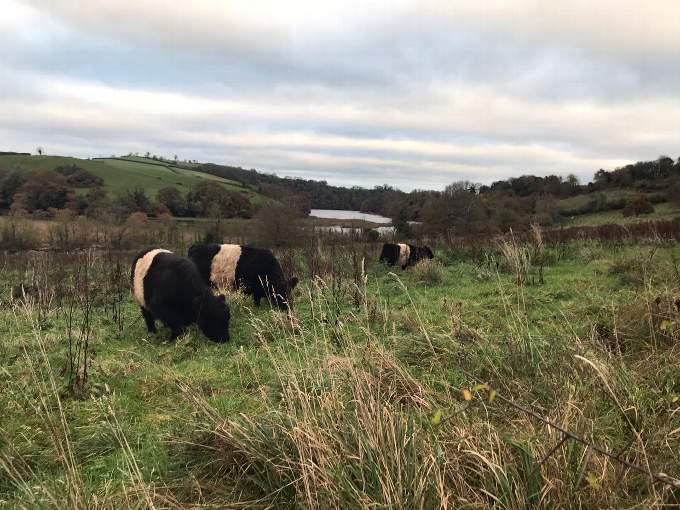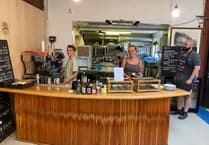The woolly pigs are back at Sharpham – and this time they have been joined by woolly cows.
The animals have been introduced to farming fields being rewilded at the estate near Totnes, under a four-year Lotto funded project called Wild for People.
Dog-walkers are being asked to support the project by sticking to the path, keeping their dogs on a lead and staying out of the fields where the cows and pigs are grazing – which is on land between the River Dart and the Totnes to Sharpham cycle/footpath as it nears Sharpham House.
Mangalitsa pigs and Belted Galloway cows are grazing part of a 50-acre section of the estate and will sculpt the land, which used to be conventionally farmed and fertilised, enabling wild plants to establish and support more insects, birds and small mammals.
The pigs are ‘disruptors’, mimicking the effects of wild boar (the wool-covered Mangalitsas are a close piggy relative).
Boar used to roam the land, rooting under the turf to find dandelion roots and other tasty morsels to eat.
The cows are curly, black and white and are known for their hardiness and ability to be outside all-year-round.
Their grazing, using their tongues to rip up the grass, helps to control and diversify plant growth, whilst their hoof-falls and dung create places and food for insects.
Meanwhile, deer, ,which are known to be on the land already are ‘browsers’, nibbling at the ends of branches and hedgerows, eating buds and shoots.
This disruption of grazing and browsing is a natural part of wild land, says Simon Roper, director of Sharpham-based nature conservation trainers, Ambios Ltd, which is a partner in the Wild for People project.
Simon explained: “In a natural ecosystem we get lots of growth and regeneration – nature’s great at abundance – but without the effects of the disruptors, grazers and browsers, things would grow unchecked and get out of balance.
“The animals all have an effect and all have a lineage back to a time when Europe was covered in wood pasture and was a better, richer place for wildlife than it is today, being grazed, browsed and nibbled upon.
“It’s all part of biodiversity - nature’s matrix.”
It is the second time the land at Sharpham has hosted the pigs.
In April this year, another pair were on the land for several weeks, although dry weather meant that their ‘disruption’ wasn’t as effective as it could have been.
But their rootling wasn’t in vain and Wild for People has installed a new pair for a much longer period this time.
Simon said: “The last time we had them, the challenge was the weather.
“But it was still useful as proof of concept research.
“We want to take it to the next stage now which is to have them back in for six to nine months.”
Wetter ground is best for the piggies, who’ll be turning over the land with their powerful snouts.
Last time round, the pigs built a nest in the bramble hedge, as they do in the wild to sleep and keep warm in, and Ambios nature conservation trainees will be watching out to see if they do the same.



-has-been-appointed-as-the-new-chair-of-Devon-County-Council-(Ima.jpeg?width=209&height=140&crop=209:145,smart&quality=75)

Comments
This article has no comments yet. Be the first to leave a comment.